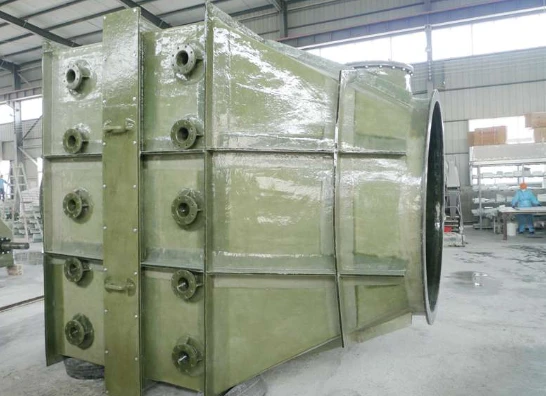
-
 Afrikaans
Afrikaans -
 Albanian
Albanian -
 Amharic
Amharic -
 Arabic
Arabic -
 Armenian
Armenian -
 Azerbaijani
Azerbaijani -
 Basque
Basque -
 Belarusian
Belarusian -
 Bengali
Bengali -
 Bosnian
Bosnian -
 Bulgarian
Bulgarian -
 Catalan
Catalan -
 Cebuano
Cebuano -
 China
China -
 China (Taiwan)
China (Taiwan) -
 Corsican
Corsican -
 Croatian
Croatian -
 Czech
Czech -
 Danish
Danish -
 Dutch
Dutch -
 English
English -
 Esperanto
Esperanto -
 Estonian
Estonian -
 Finnish
Finnish -
 French
French -
 Frisian
Frisian -
 Galician
Galician -
 Georgian
Georgian -
 German
German -
 Greek
Greek -
 Gujarati
Gujarati -
 Haitian Creole
Haitian Creole -
 hausa
hausa -
 hawaiian
hawaiian -
 Hebrew
Hebrew -
 Hindi
Hindi -
 Miao
Miao -
 Hungarian
Hungarian -
 Icelandic
Icelandic -
 igbo
igbo -
 Indonesian
Indonesian -
 irish
irish -
 Italian
Italian -
 Japanese
Japanese -
 Javanese
Javanese -
 Kannada
Kannada -
 kazakh
kazakh -
 Khmer
Khmer -
 Rwandese
Rwandese -
 Korean
Korean -
 Kurdish
Kurdish -
 Kyrgyz
Kyrgyz -
 Lao
Lao -
 Latin
Latin -
 Latvian
Latvian -
 Lithuanian
Lithuanian -
 Luxembourgish
Luxembourgish -
 Macedonian
Macedonian -
 Malgashi
Malgashi -
 Malay
Malay -
 Malayalam
Malayalam -
 Maltese
Maltese -
 Maori
Maori -
 Marathi
Marathi -
 Mongolian
Mongolian -
 Myanmar
Myanmar -
 Nepali
Nepali -
 Norwegian
Norwegian -
 Norwegian
Norwegian -
 Occitan
Occitan -
 Pashto
Pashto -
 Persian
Persian -
 Polish
Polish -
 Portuguese
Portuguese -
 Punjabi
Punjabi -
 Romanian
Romanian -
 Russian
Russian -
 Samoan
Samoan -
 Scottish Gaelic
Scottish Gaelic -
 Serbian
Serbian -
 Sesotho
Sesotho -
 Shona
Shona -
 Sindhi
Sindhi -
 Sinhala
Sinhala -
 Slovak
Slovak -
 Slovenian
Slovenian -
 Somali
Somali -
 Spanish
Spanish -
 Sundanese
Sundanese -
 Swahili
Swahili -
 Swedish
Swedish -
 Tagalog
Tagalog -
 Tajik
Tajik -
 Tamil
Tamil -
 Tatar
Tatar -
 Telugu
Telugu -
 Thai
Thai -
 Turkish
Turkish -
 Turkmen
Turkmen -
 Ukrainian
Ukrainian -
 Urdu
Urdu -
 Uighur
Uighur -
 Uzbek
Uzbek -
 Vietnamese
Vietnamese -
 Welsh
Welsh -
 Bantu
Bantu -
 Yiddish
Yiddish -
 Yoruba
Yoruba -
 Zulu
Zulu
Feb . 05, 2025 06:22
Back to list
Insulation Tanks
Maintaining the integrity and safety of hazardous substances often starts with the selection of the right storage solution. One critical component in industries such as chemical manufacturing, agriculture, or pharmaceutical production is the acid storage tank. Understanding the complexities and considerations involved in choosing and maintaining these tanks is essential for operations reliant on the safe handling of corrosive materials.
Furthermore, the expertise in installation and maintenance of these tanks cannot be overstated. Proper installation not only involves the physical setup but also includes ensuring adequate ventilation, spill containment measures, and precise calibration of monitoring systems. Regular maintenance by trained professionals, who have deep knowledge of the specific acids in use, is paramount to extend the lifespan of the tank and prevent costly leaks or contamination incidents. Selecting and utilizing acid storage tanks demand not only a deep understanding of the materials but also a robust framework for ongoing assessment and maintenance. Suppliers with a proven track record of providing reliable storage solutions and after-sales service become invaluable partners. Their experience in tailoring tanks to meet specific industrial needs greatly enhances operational safety and efficiency. In conclusion, the effective management of acid storage is not only about acquiring a high-quality tank but embracing a holistic approach. This includes strategic planning, deployment of advanced technologies for monitoring, regular maintenance, and ensuring compliance with safety regulations. Industries that prioritize these aspects benefit from enhanced safety, reduced risk of environmental impact, and optimized operational procedures—ultimately driving forward a culture of trust and authority in handling hazardous substances.


Furthermore, the expertise in installation and maintenance of these tanks cannot be overstated. Proper installation not only involves the physical setup but also includes ensuring adequate ventilation, spill containment measures, and precise calibration of monitoring systems. Regular maintenance by trained professionals, who have deep knowledge of the specific acids in use, is paramount to extend the lifespan of the tank and prevent costly leaks or contamination incidents. Selecting and utilizing acid storage tanks demand not only a deep understanding of the materials but also a robust framework for ongoing assessment and maintenance. Suppliers with a proven track record of providing reliable storage solutions and after-sales service become invaluable partners. Their experience in tailoring tanks to meet specific industrial needs greatly enhances operational safety and efficiency. In conclusion, the effective management of acid storage is not only about acquiring a high-quality tank but embracing a holistic approach. This includes strategic planning, deployment of advanced technologies for monitoring, regular maintenance, and ensuring compliance with safety regulations. Industries that prioritize these aspects benefit from enhanced safety, reduced risk of environmental impact, and optimized operational procedures—ultimately driving forward a culture of trust and authority in handling hazardous substances.
Related Products









